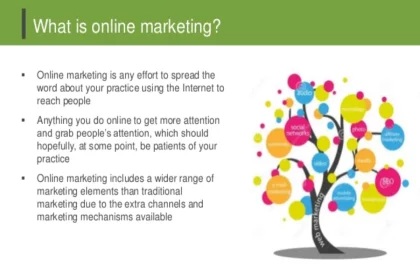App Launching – Best practices for launching apps from the App Store are constantly changing. The competition is fierce, with 1.85 million apps available for download on the App Store and 2.56 million apps on Google Play. Optimizing your mobile app launch is more important than ever with so many mobile apps on the market. That’s why it’s more central than ever to think about how to launch your app on the App Store. From market research to monetization, there are many important cases to consider before your app is ready for your target audience. Let’s walk through the process of creating and publishing a mobile app to the App Store.
Also read : All About Tasha k Net Worth – About, Biography, and More
Table of Contents
Before Starting The App, You Should Know:
- The target audience of your application
- Your app’s unique selling point
- Why users are interested in your product
- Competing products and prices
- The most realistic way to reach your target audience
- Best time to start your application
1. Market Research
Before building your mobile app launching, you must spend pre-development and pre-launch activities. The more effort you put into research and troubleshooting, the easier it will be in the later stages of your journey.
Knowing how to best fit your environment and application is the best place to start. Demand continues to grow with users, but each niche has many competitors vying for attention. This is why it is important to know the market, the positioning of your competitors and the problems they can solve.
2. Know Your Buyer Persona
Like the marketplace, you need to know your future users and be prepared to meet your audience’s expectations.
It’s not enough to say you’re building apps for young people or targeting business teams. You must understand how you can fit into their routine to get their attention.
3. Initial Design And Development
After validating your idea and the value of your product, start creating your product. Building an average app takes at least three months, and you don’t need to have a full product right away. A key aspect of the decision is the technology stack and the platform used, whether your app is native, whether you want an iOS or Android app, and whether you choose to be cross-platform.
Initially, it would help to create a roadmap and a wireframe for your app. Hire a team of quality mobile app developers and start building your apps.
4. Start Preparing for Life
While your development team builds your app, you must start spreading information and generating interest in future products.
The essential steps in this direction are setting up your landing page and registering a domain for your app. This will help you in future releases, making it easier for your audience to find you.
Landing pages act as a hub for how to get leads and subscribers to connect with post-launch and post-launch.
5. Define Clear Objectives And KPIs
Collecting information about your buyer persona and market will help you better understand your app’s strengths. Based on this, you must decide what is considered a success. You need to decide if it is important to have as many users as possible or if you are more interested in a specific target audience.
6. Prototype Testing
Prototype testing should begin as soon as possible. Having your application checked by an in-house QA engineer throughout the development process is a great solution. And when the prototype is ready, it should be shown to a test audience for valuable feedback.
App launching your app in front of a test audience sooner can save you a lot of money on fixing what’s already been built.
You can test that your application does what it should do in several steps. This means setting yourself specific goals to achieve. For example, you can ensure that the time it takes users to reach a conversion, the UX is clear, and there are no issues when users navigate and interact with your app.
Also Read: Contractors Marketing Ideas, Strategies, Tips, and More
7. Make A Specific Plan
After considering all the possibilities and gathering relevant information, you’ve built and tested your main application, and it’s time to set a release date. It targets both you and your audience. They will know when they can see the finished product. At the same time, certain deadlines will help you move forward instead of delaying the release without wondering if everything is perfect.
It’s also a good time to develop an overall marketing plan that covers your messaging timeline, which channels to use, and the key messages you need to get across.
8. Beta Version
Once everything is in place, you will need to create an embedded version so that a few testers can see how the final product will work in the “real world”, but there is no risk of encountering problems.
As with previous tests, the study should be specific and ensure that all functions are in place.
You can use this information to get closer to a big launch.
9. Choose Your Broadcast Platform
It would help to choose a store where your app is available based on your technical and development decisions. Go through the approval process to complete the publishing process.
Every mobile app store has rules and regulations that must be followed while publishing apps. Learn every detail carefully and prepare the application according to your needs.
This includes creating descriptions and introducing other elements, such as screenshots and high-quality videos. If you follow the instructions provided by each store, your app will be released in just a few days.
10. Start Time
This is the most exciting part of the process and the easiest part with all the careful preparation you’ve done.
Use the material you create along the way and push through all available channels. Whether you choose an influencer or a PR piece, the key is to make your call to action for your upload as present as possible.
Place your store’s link on your website, send out a newsletter with a link to the page, and include it in all your social media bios. Now is not the time to be humble.
Paid advertising is the best way to reach a specific target group you have in mind, so you should spend some of your budgets on paid advertising.
11. Listen After Exit
Over time, you can see how the launch went and whether KPIs were met.
You’ve done most of the work you needed to do, but there are things you can do to maximize the success of your application. Collecting other types of feedback can be critical to an application’s lifecycle.
Monitor every mention on the platform and social media, learn how your app interacts with users, read and respond to user comments and suggestions, and track engagement across channels to spot trends.
12. Responding to Comments
The information you get from your audience is only useful if you act on it. You should continue to test new performance updates, fix bugs you might encounter along the way, and implement new user-recommended features when they prove relevant.
Continuous updates will keep the app relevant for longer, create positive word of mouth for future endeavours, and strengthen our relationship with the community.
Conclusion
First, determine the market and get the details of your target group. After that, you must go into the initial preparation and lay the groundwork. That sounds like a lot to take in, but you’ll find that good idea are sustainable and can be successful if you put time into each process and effort into it.
Once the communication plan has been decided and all available channels covered, it will soon be ready to be launched. Remember. Just because your app is out doesn’t mean it’s time to stop working. App launching keeps your users informed, test, update and build an audience for future releases.
Related posts
Featured Posts
Define Online Marketing: Its Benefits, Strategies and More
What is Online Marketing? Online marketing uses web channels to deliver a message about a company’s brand, products, or services…
What is the Tasha k Net Worth and Biography?
The Net Worth Of Tasha k Tasha K is an African American instinctive in Panama City. Her real name is…


